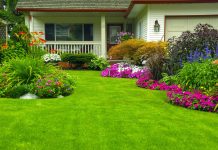 The role of soil in plant growth is unique. Soil serves as the basic resource and the roots of the plant act as a means to transfer the water and nutrients from the soil to the leaves.
The role of soil in plant growth is unique. Soil serves as the basic resource and the roots of the plant act as a means to transfer the water and nutrients from the soil to the leaves.
Soil provides physical support, acts as a temperature fluctuations moderator, and protects from toxins.
Normally, soil comes in six types–sandy, loamy, clay, silty, peaty, and chalky.
As the soil type and its quality directly affect the roots and its nutrient transferring job, it is good to understand the soil types and identify the best soil for your plant.
Soil types can be differentiated based on its characteristics–color, moisture content, compaction, organic content, pH, structure, texture, profile and temperature.
1. Color: It is a basic factor to determine the soil’s organic matter, biotic activity, fertility and aeration. So, depending on the soil color, the condition of the soil can be determined.
Dark colored soil: The organic matter, available nitrogen, fertility and aeration will be very high whereas erosion factor will be low.
Medium colored soil: All factors will be medium.
Light colored soil: The organic matter, available nitrogen, fertility, and aeration will be low whereas erosion factor will be high.
To identify the soil color, the only way is to dig in 3″ – 4″ deep and test the color using a slice of soil.
2. Moisture Level: The moisture content in the soil differs significantly with the soil type, organic matter in the soil and atmosphere.
Although the moisture level in the soil can be estimated roughly, it is good to determine the moisture content in the soil through a laboratory test [soil testing]. The soil moisture level is generally reported as percent moisture on the weight of a given sample.
3. Compaction: Soil with high compaction rate doesn’t provide enough air to the roots and water tends to move overly causing more damage to the plant growth.
But, a normal soil with low compaction rate can able to absorb and preserve water, release water to the roots slowly and provides sufficient air to the root zone of the plants.
So, the less the compaction rate in the soil, the more the plant production will be. For example, sand doesn’t preserve many nutrients or water, whereas clay can preserve more nutrients than other soil types.
4. Organic Material: This content in the soil influences the plants and other organisms in the soil. Organic material decomposition supplies several essential nutrients to the plants as well as soil residents.
So, keep the soil deficient free through regular applications of organic materials to the soil. Ignition is the best way to determine the organic materials quantity in the soil.
5. Level of pH: pH level of about 6 – 6.5 in the soil is good for plant growth. Universal indicator solution or pH paper is the best source to determine the amount of pH in the soil.
Remember that pH level below 3.5 is too acidic and above 8.5 is too alkaline. Moreover, the pH level fluctuates within the soil and each layer of the soil differs in pH concentration.
6. Soil structure: It describes the way soil affects the water flow, airflow and penetration of roots into the soil. The shape of the soil determines the soil structure.
So, to know the soil structure, carefully cut the layers and observe its characteristics with one of these structural types of the soil–columns, blocky, granular, and plate-like.
7. Profile: Determining the soil type is really possible by obtaining a sample of the soil using a soil core tool, a tool that helps pull out the soil from the ground. Examining this soil core helps determine the soil type and its layers.
8. Soil Texture: The proportionate allocation of the various sizes of particles in the soil determines the soil texture. Sand, clay and silt are the forms that describe the size of each particle in the soil.
Sand is the largest particle and very gritty; clay is very smallest sized particle and is normally sticky and tough to squeeze; silt is medium sized particle and very soft.
9. Temperature: It plays a vital role in identifying the plant growth rate and its endurance.
Soil temperature can be measured using a thermometer at 2â€, 6“and 12†below the ground surface and compare their readings. The temperature ranging 40-85 F indicates a better growth whereas below 40 F and above 85 are considered as no growth at all.
Read more:










Comments are closed.